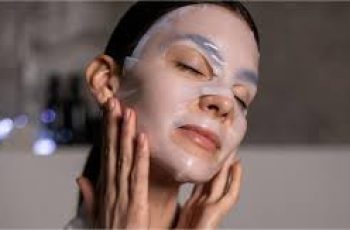
What Is Azelaic Acid and What Are Its Skincare Benefits?
If you’ve heard about various facial acids and feel overwhelmed, you’re not alone. But azelaic acid is truly a standout ingredient in the world of skincare.
For those struggling with breakouts, redness, or rosacea, it might just be your new best friend.
What Is Azelaic Acid?
Azelaic acid is a natural compound found in grains like barley, wheat, and rye.
In skincare, it acts as a chemical exfoliant with antioxidant properties, helping to calm irritated skin and reduce inflammation and redness. It also fights acne and blemishes.
Compared to more popular acids like salicylic acid or glycolic acid, azelaic acid is lesser-known. Because of this, it’s less common in many skincare products.
However, that makes it a bit of a “holy grail” ingredient for those who discover it.
Prescription products tend to contain higher amounts of azelaic acid, sometimes up to 20%.
Over-the-counter products have lower concentrations but can still offer significant benefits, making them ideal for beginners.
Always consult a dermatologist before introducing azelaic acid into your routine to ensure it’s safe and appropriate for your skin type.
How Does Azelaic Acid Benefit the Skin?
Azelaic acid is a powerful ingredient that helps address many skin concerns. It works by encouraging healthy skin cell behavior and improving the upper layer of your skin, leaving it smoother and clearer.
Common skin issues azelaic acid helps reduce include:
Frequent breakouts and spots
Pigmentation and uneven skin tone
Scars and uneven skin texture
Dullness and lack of radiance
Redness and increased sensitivity
Unlike alpha hydroxy acids (AHAs) or beta hydroxy acids (BHAs), azelaic acid is a unique ingredient.
It is gentler than many AHAs and BHAs but still effective, making it great to use alongside these acids for enhanced skincare benefits.
When combined with other acids like salicylic or lactic acid, azelaic acid can help combat blemishes, even out skin tone, and minimize signs of aging, giving your skin a comprehensive boost.
To learn more about AHAs and BHAs, check out our complete guide that explains which acid works best for your skin type and concerns.
Can You Use Azelaic Acid Every Day?
Yes, you can! Most research has focused on prescription-strength azelaic acid, proving it’s safe and stable enough for daily use, both morning and night.
That said, azelaic acid can cause dryness and peeling, especially when you first start using it. To avoid irritation, introduce it slowly into your routine.
Start by applying it only at night, and follow with hydrating oils or moisturizers.
Once your skin builds tolerance, you can increase to daily use. But always apply a broad-spectrum SPF 30 or higher in the morning to protect your skin from sun damage and UV rays.
When Should You Use Azelaic Acid in Your Skincare Routine?
For the best results, azelaic acid should be used in leave-on products, such as serums or moisturizers, rather than cleansers. Cleansers rinse off quickly, giving acids less time to work.
Serums and moisturizers allow azelaic acid to gently exfoliate dead skin cells, fade pigmentation, and target early signs of aging.
After applying azelaic acid, it’s wise to layer on a hydrating product, like a gel-based formula with high concentrations of hyaluronic acid. This helps prevent dryness and restores moisture balance to your skin.
What Are the Side Effects of Azelaic Acid?
While azelaic acid is generally safe, some users may experience side effects such as:
Burning or tingling sensations on the skin
Peeling or flaking, especially in the beginning
Dryness and redness
To reduce these effects, use hydrating moisturizers and sunscreen daily. Apply azelaic acid gradually and avoid using harsh products alongside it.
If you experience more severe symptoms, stop use immediately and consult a healthcare professional.
Less Common and More Serious Reactions
Though rare, some people may have serious reactions to azelaic acid, including:
Blistering or severe irritation
Swelling and hives
Itching and difficulty breathing
Joint pain or tightness
Fever
Because of these risks, always perform a patch test before fully adding azelaic acid to your routine. Apply a small amount to a discreet area of skin and wait 24 hours to check for adverse reactions.
If any serious symptoms appear, discontinue use and seek medical advice promptly.
Why Is Azelaic Acid So Special?
Azelaic acid is still somewhat mysterious because it isn’t as widely studied or talked about as other facial acids. However, its growing popularity among skincare experts and enthusiasts speaks volumes.
Its unique combination of anti-inflammatory, antioxidant, and exfoliating effects makes it effective for a variety of persistent skin issues, including acne, rosacea, and pigmentation problems.
If you suffer from redness or frequent breakouts, azelaic acid might just hold the key to clearer, calmer skin. It’s worth exploring to see if it’s the missing piece in your skincare routine.
In Summary
Azelaic acid is a naturally occurring acid derived from grains and used in skincare for its exfoliating and anti-inflammatory properties.
It benefits skin prone to acne, redness, uneven tone, and dullness.
It is gentler than many AHAs and BHAs but still effective and can be safely combined with other acids.
Prescription products often contain higher percentages; over-the-counter versions are lower but still effective.
Start slowly to avoid dryness and irritation, and always use sunscreen during the day.
Use azelaic acid in serums or moisturizers rather than cleansers for best results.
Side effects may include tingling, dryness, or redness but usually lessen with time. Serious allergic reactions are rare but require immediate medical attention.
Azelaic acid’s unique properties and wide range of benefits make it a valuable addition to any skincare regimen.
By helping calm inflammation, reduce pigmentation, and prevent breakouts, it supports a healthier, more radiant complexion.
Want to dive deeper? Explore more about chemical exfoliants and how different acids work by checking out our detailed guides.
Understanding these ingredients empowers you to choose the best products tailored to your skin’s needs.


